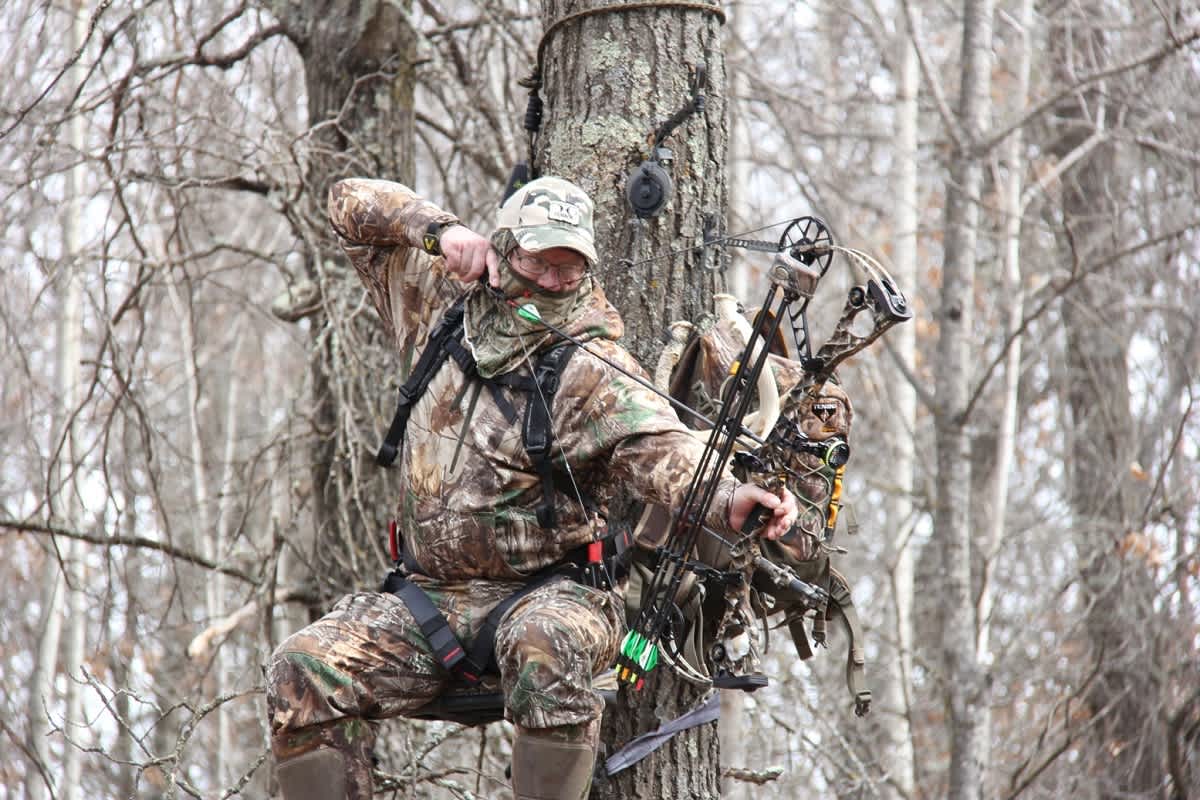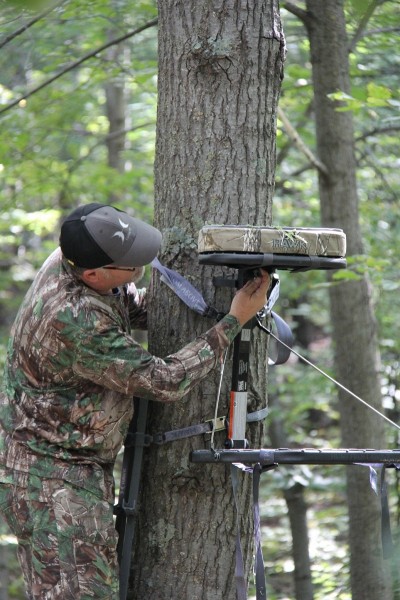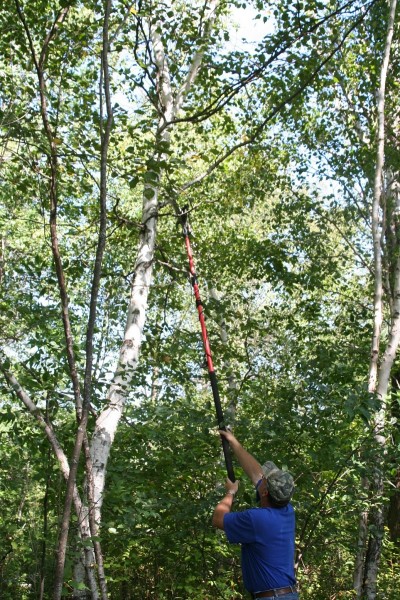The Traveling Hunter’s 6 Rules for Trimming Shooting Lanes
Bernie Barringer 05.13.15

Is there anything worse than having a the buck of a lifetime stop with a limb right in the way so you have no shot? Here’s how to avoid just that disappointing scenario.
In a perfect world, a hunter can set stands in the summer, trim shooting lanes, and have plenty of time to wait for the deer to acclimate to the changed site before he hunts. He can even pile debris over the trails he doesn’t want the deer to use to re-route them past his stand.
However, if you’re like me and you travel to hunt a lot, you will often find yourself putting up stands shortly before you hunt.
DIY traveling hunters rarely live in a perfect world, and we must hunt aggressively and take some chances that a hunter with access to plenty of private land would never take. That’s particularly the case with hanging stands and trimming shooting lanes. Most often, we are creating a stand site that we will use that same day or at the least within a couple days.
If you have an opportunity to clear shooting lanes well in advance of hunting, do it. The hunter working weeks before the season doesn’t have to worry much about overdoing it—cutting too much can kill off a stand site. Here is some advice on how to minimize negative impact.
1. Trim from the treestand when you can.
The more work you can do without moving about on the ground, the better. This will minimize ground scent and the sight of cuttings at the deer’s eye level. Use a long pruning pole to reach what you can from the stand.
Trimming is easily done with two people, one on the ground directing and one in the tree cutting. Since you are likely to be working alone, mark the spots you want to open up, so you can see them clearly once you get in the stand. This eliminates extra trips up and down the tree.

2. Pull branches to the side and tie them off.
I have been doing this more and more. I carry a spool of olive green parachute cord with me and tie branches off rather than cutting them. I will pull branches down to a level below my stand which blocks the deer’s view of my stand, plus it eliminates the problem of a fresh cutting that must be disposed of. Sometimes a branch can be pulled behind you to help break up your outline. I don’t know why I didn’t think of this years ago, it really works.
3. Do the work before a rain if possible.
I watch the weather forecast like an addict when I am hunting. Any time I see a rain coming, I scramble to do treestand work, check trail cameras, and cut lanes. I know the rain will wash out my scent and make the site huntable much sooner. I also watch the wind direction because I do not want my scent blowing into a bedding area while I work up a sweat clearing out a few shooting lanes. Choose the times when you do your stand prep work carefully.
4. Cut close to the ground.
Nothing says “shooting lane” like a bunch of sapling stubs scattered about the area. If you are cutting saplings, cut them off level with the ground and cover up the stump. Kick some leaves over them or rub mud on the bright, freshly cut wood.
Use a nippers or pruning tool instead of a saw whenever possible because it doesn’t leave sawdust in the area. Sawdust can be covered with leaf litter or whatever is available in the area to make it blend in.
5. Hide your activities.
Carry the debris off. Nothing can put off a mature buck faster than seeing a radical change in the area. I once left a pile of trimmed branches at the base of my tree and had a doe with two fawns actually nibbling on the branches below me a few hours later. But a mature buck may not be that forgiving—I once saw a buck stop and back up three cautious steps before turning around to leave the area upon sight of a similar pile of branches. Carry the debris off a ways and toss it in a ditch or scatter it well away from the area.

6. Minimize scent at the site.
Don’t overdo it, cut a minimum of what you must in order to have a clean, open shot—but that’s all. Work quickly and quietly and cover your arms so your bare skin doesn’t brush against the surroundings. Wear gloves when handling tools and trimmed branches. Wear your rubber boots.
Spray down with Scent Killer spray at least from the waist down to minimize odor on the ground and low brush. If you had to stand on a trail to cut something, hit that area with a mist of scent killer spray as well. Spray your tools because you will be laying them on the ground at times.
Before trimming any shooting lanes, you must know the laws for the area you are hunting. Some locales prohibit you from cutting certain species of trees and some do not allow trimming at all. But trimming shooting lanes is a part of life for the DIY hunter on most hunts. Learning to do it quickly and with minimal negative impact is a skill that can be learned and practiced.
Follow Bernie’s bowhunting adventures on his blog, bowhuntingroad.com.

